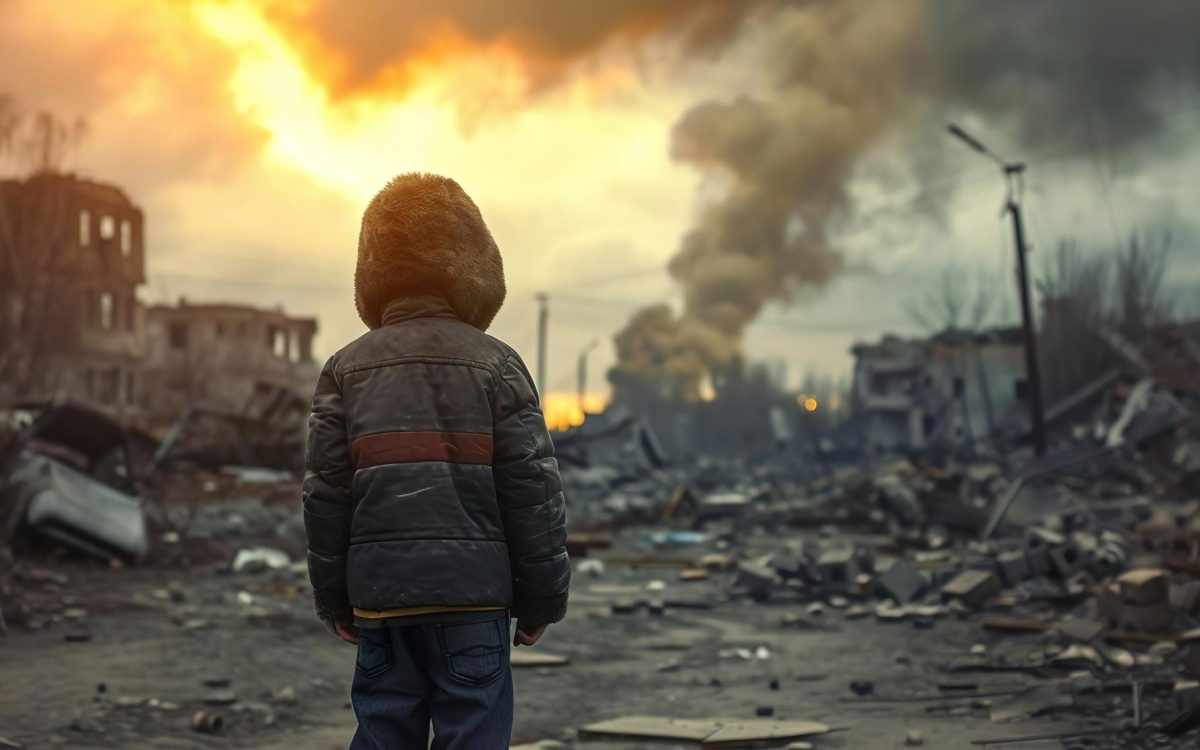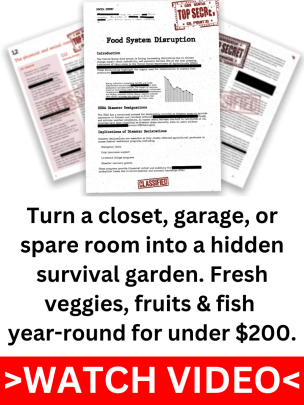The evening is peaceful until the electricity goes out. A few minutes later, your phone rings with a weather alert, a tornado is directly approaching your location. While your children are crying, terrified, and perplexed, you rush to bring them to safety and gather supplies. A good survival plan is essential during this chaotic time.
Anyone finds emergencies difficult, but when children are involved, the situation becomes even more difficult. From emotional demands like anxiety and perplexity to physical weaknesses like dehydration, children have special needs. Having a family survival plan guarantees that you are not only ready but also capable of safeguarding your kids at the most uncertain times of life.
In this tutorial, we’ll examine key survival techniques for families with children. This article will help you prepare for any emergency while keeping your family safe and peaceful, from identifying their unique needs and teaching them basic skills to creating kid-friendly survival packs, locating safe refuge, and handling mental stress.
Understanding Children’s Needs in Survival Situations
Children have special requirements that need to be met in emergencies; they are not just little versions of adults. They are more vulnerable to hypothermia in cold weather because their bodies physically lose heat more quickly. Regular access to safe drinking water is essential since they dehydrate more quickly. They also need to eat more frequently due to their smaller tummies, so it’s crucial to include kid-friendly, simple-to-eat snacks.
Children and adults react differently to emergencies on an emotional level. They may experience fear or even panic as a result of their incomplete understanding of the situation. Clear communication, reassuring items like stuffed animals, and established rituals can all help them control their emotions. In terms of psychology, their capacity to cope frequently rests on the composure and certainty of the adults in their lives.
An already stressful situation can become a crisis if the unique requirements of children are not taken into consideration. You can make sure that your family’s survival strategy is not only successful but also gives your kids the assistance they need to be safe and composed by taking into consideration both their physical weaknesses and emotional health. When you plan, you may avoid rushing to take care of fundamental necessities during an emergency and instead concentrate on the greater picture.
Teaching Children Survival Basics
Teaching survival skills to children doesn’t have to be too difficult. Start with the fundamentals: make sure your kids understand how to call for assistance, their entire name, and your contact details. For younger children, you can concentrate on teaching them basic concepts like where to find safe havens in your house in the event of a storm or the value of remaining near an adult in strange circumstances.
You may build on these abilities as they become older by teaching them things like how to properly use a torch or filter water. For instance, demonstrate to them how to locate the North Star or identify simple landmarks for navigating. Your children will feel more confident without feeling overburdened as the difficulty of these sessions is progressively increased.
One of the best ways to educate kids on how to deal with emergencies is through role-playing. Make possible catastrophes into drills, such as reenacting a “lost and found” exercise at a park or feigning to flee during a fire. Make it a game; this will help kids develop muscle memory and make the teachings enjoyable.
Regular drills should be conducted, particularly for earthquake and tornado scenarios. Start small and work your way up to more difficult things, such as teaching them how to choose a safe room or prepare their emergency bag. In a true emergency, repetition helps your children remain composed and focused while also boosting their confidence.
Focus on fundamental norms while teaching toddlers, such as keeping together if they become separated or calling for assistance when necessary. Introduce older kids to responsibility by having them assist with younger siblings or carry supplies. They will learn effectively and feel like important contributors to the family’s safety if survival training is adapted to their age and ability.
Creating a Family Survival Kit
Water, non-perishable food, first aid supplies, and clothing are essentials for every family survival kit, but when kids are involved, you need to go above and beyond. Bring comfort things like small toys, a blanket, or your favorite stuffed animal. In times of stress, these familiar items can provide a sense of security. Remember to include easy-to-eat, no-prep snacks for kids, such as crackers, applesauce pouches, or granola bars.
Puzzles and coloring books are two more activities that might keep kids busy and less anxious. Recall that providing for children’s bodily requirements is only one aspect of survival; another is fostering an atmosphere that makes them feel secure and at ease. During a crisis, having goods specifically designed to support their emotional well-being makes a big difference.
Your children’s demands will evolve as they get older. For older children, additional socks, shoes, and heavier snacks will eventually replace diapers and formula. Make sure your survival kit fits their current size, age, and preferences by reviewing and updating it every six months. You’ll always have what they need if you keep your kit up to date.
Every member of the family, including the children, should have their own emergency kit. Children who have a small bag filled with age-appropriate necessities, such as snacks, a flashlight, and a water bottle, feel more responsible and are certain to have what they need in case they are separated. Make sure the bags are manageable, even for younger kids, by making them light and convenient to carry.
Survival Shelter Tips for Families
When picking a shelter, always prioritize safety. Ensure that the space is clear of risks such as sharp items, unstable furniture, and exposed wiring. If you’re in a public shelter, look for a calmer, less congested area where your family may have solitude. Large crowds can overwhelm youngsters and raise the risk of disease transmission.
If you are sheltering at home, set up a safe area with goods ready to go. Make sure it’s loaded with essentials like food, water, and blankets. For outdoor situations, invest in a strong family tent that offers plenty of space and protection from the weather. Planning for your children’s short- and long-term shelter needs assures their safety and comfort.
Providing a feeling of normalcy in a shelter environment is critical for children’s mental well-being. Set up a modest, designated area for your children to play, read, or relax.
Include familiar items, such as a favorite blanket or a bedtime reading, to make them feel at ease. Simple routines, such as regular mealtimes or a bedtime wind-down exercise, can offer stability and comfort in uncertain times.
Emergency Food and Water Planning for Kids
It’s important to keep foods that kids like and are accustomed to on hand because they can be finicky eaters. Give special attention to kid-friendly, shelf-stable products such as applesauce pouches, crackers, canned fruits, and granola bars. These choices are simple to consume, don’t need to be prepared, and include vital nutrients. In an emergency, avoid offering new or exotic foods because children are less inclined to try new flavors while they are under stress.
Use airtight containers or vacuum-sealed bags to preserve the freshness of these things while storing them for an extended period of time. To make sure the food doesn’t go bad, rotate your stock frequently, every six months is a decent rule of thumb. Even in stressful times, your kids will have something to eat if you keep these easy, ready-to-eat options on hand.
Planning is especially important if your child has food limitations or allergies. To prevent confusion, keep allergen-free substitutes on hand and identify them clearly. Include their favorite meals or snacks, even if they don’t seem very useful, for finicky eaters. Prioritize what they will actually eat over what would look best in a survival situation in order to ensure they get adequate calories and nourishment.
Children need to drink plenty of water because they are more likely than adults to become dehydrated. Include in your kit foldable water containers, purification tablets, and portable water filters. To help older children comprehend the need to drink safe water, teach them basic water purification methods like boiling or utilizing tablets. To keep your kids hydrated and healthy in an emergency, always give priority to safe water sources.
Managing Stress and Emotions During a Crisis
Children may experience confusion, fear, or overwhelm as a result of disasters. These feelings may show themselves as withdrawal, outbursts, or clinginess. To preserve their emotional well-being, it is essential to identify these symptoms and take prompt action. Your reaction as a parent sets the tone; your ability to communicate clearly and provide calm reassurance can help your children overcome their concerns.
Routines are an effective way to bring consistency in unpredictable circumstances. Children can feel safer if even small things like regular mealtimes or nighttime routines are implemented. Even in a shelter situation, reading a beloved story before bed can become a reassuring nightly ritual.
Children can be effectively distracted from the commotion around them by games and hobbies. Include coloring pages, card games, or tiny toys in your emergency bag. By keeping them entertained and occupying their minds, these activities also provide them with periods of normalcy, which reduces worry.
Youngsters pick up emotional cues from the adults in their lives. They are more likely to follow your example and feel protected if you remain composed and attentive. Maintain a stable foundation for your family by managing your stress and taking care of yourself. Keep in mind that your ability to bounce back from setbacks not only benefits you but also teaches your kids how to do the same.
Long-Term Survival Strategies for Families with Kids
Children’s demands and skills change as they get older, thus your survival strategy must also change. To fit their size and preferences, supplies like clothes, shoes, and even food choices should be updated on a regular basis. In the long run, abilities they acquired as toddlers, like remaining near people, can develop into more complex duties, like learning basic first aid or helping out around the house.
Teens can assume even more important responsibilities, such as keeping an eye on supplies or teaching them survival skills like water filtering or fire starting. Participating in these activities helps them develop a sense of independence and responsibility while also preparing them for emergencies. Your family will remain prepared and aware of their roles if you regularly review and practice your survival plan.
Maintaining children’s mental engagement is just as crucial in a long-term survival scenario as attending to their physical demands. Create a simple homeschooling schedule with resources such as creative projects, storybooks, and workbooks. In addition to serving as lessons, teaching useful skills like cooking or gardening can improve the general well-being of the family. In difficult circumstances, an emphasis on education keeps children’s sense of purpose and normalcy intact.
It’s easier to survive when you have company. Make connections with other local families to create a support system. Sharing responsibilities, abilities, and resources can ease the strain on individual families and make the environment safer and more resilient for all. Even during difficult situations, children gain a sense of social connection and teamwork via working together.
Stocking goods is only one aspect of family preparation; another is making sure that everyone, especially the kids, is equipped to handle any situation that may arise. You can keep your children safe and give them the tools they need to face obstacles head-on by involving them in the planning process and teaching them the fundamentals of survival. A solid family plan builds resilience by taking into account each person’s particular requirements.
Now is the best moment to begin preparing. Although emergencies are unavoidable, your family can deal with them head-on if they know how to handle them. Build your family’s survival kit now, practice drills, and educate your kids on the necessary skills. Being prepared is a family duty, and by banding together, you can safeguard the people you love the most.






















